
Why Worry About the Bermuda Triangle?
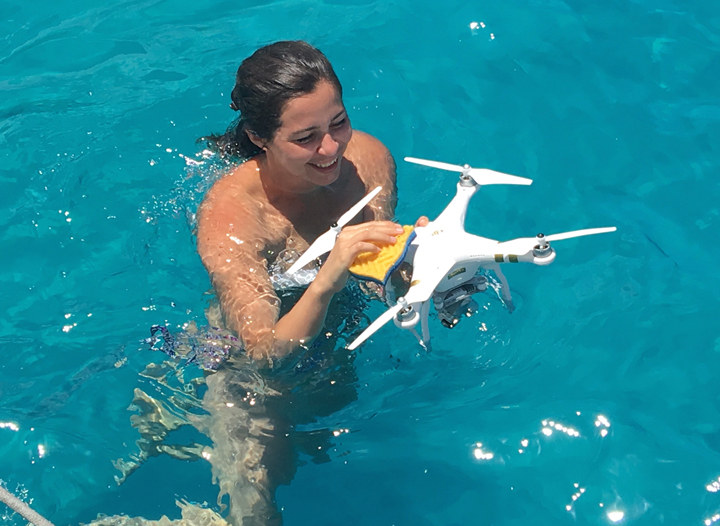
©2016Latitude 38 Media, LLC
It’s the ‘Columbie Circle’, not the Bermuda Triangle, that’s been the problem for the Latitude 38 drone pilot, who because of employment privacy rules, cannot be identified.
Of the five Latitude drones, two have crashed into the deliciously blue waters of Baie de Columbie, and another one was lost high above the entrance to the Simpson Bay Lagoon at not too far distant St. Martin. Given the size of that small area compared to the size of the rest of the world, it seems awfully suspicious, don’t you think?
The first two drone losses were most likely the result of strange but unexplained radio frequencies, possibly generated by aliens, jamming the drone’s auto-stability system. It will be noted that last week another plane hit a photographer standing on the island’s main road. Something funny is going on. This week’s drone loss, however, was much more straightforward.
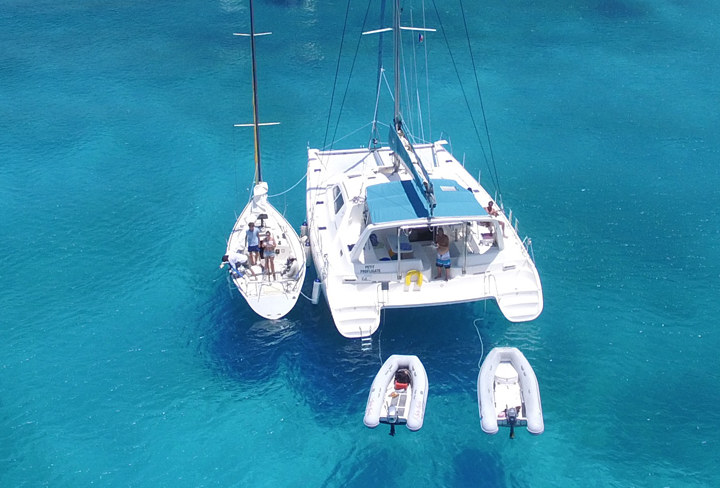
©2016Latitude 38 Media, LLC
After getting photos of the Leopard 45 ‘ti Profligate with the Olson 30 La Gamelle tied up next to her, the unnamed operator flew the drone about 150 feet away to get some aerials of David Wegman’s Cowhorn 32 Afriggin Queen. A nice shot, no?
Unfortunately, thanks to an error in the operator’s depth perception, he then thought he was flying the drone in front of Afriggin Queen to get another view. Alas, he flew the drone through the middle of the schooner, which unfortunately had some rigging holding the masts up. The drone props clipped a couple of these, went into a wild spin on the other side of the boat, and took a refreshing dip in about 30 feet of Caribbean water.
The drone was quickly retrieved by one of the La Gamelle crew, after which another member of the crew gave the drone a good saltwater scrubbing in the hopes that it would make it good as new.
The mini SD card was retrieved from the drone, rinsed in fresh water, and the photos successfully downloaded. Based on the last time the pilot took a Latitude drone for a swim, the SD card has about a week to live.
A drone specialist is now working on the drone, believing he can make it “as good as new” after doses of WD-40, contact cleaner, rice baths and what have you. The publisher of Latitude 38 doesn’t have much faith in this idea, as there are some critical electronics guts that don’t take well to saltwater. He’s just happy that while drones have become much more sophisticated — the latest have Obstacle Avoidance technology — the prices have tumbled.
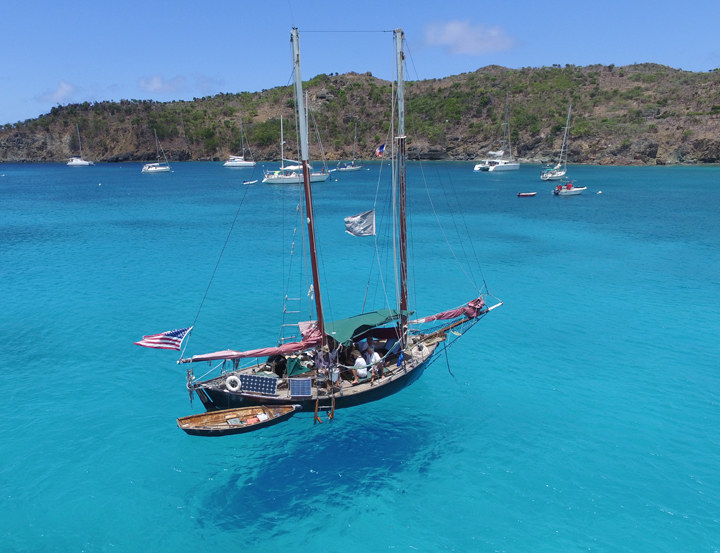
©Latitude 38 Media, LLC
Some people are under the misimpression that Latitude has lost five drones. That’s not true, as only three and a half have been lost. Drone #1 is still flightworthy, but is as hopelessly outdated at the first Apple computer. Drone #2 was pretty good — until an unnamed operator used her as a weed whacker on a palm tree next to a swimming pool The drone broke into three components. Two of them, the drone itself and the camera, fell onto the concrete next to the side of the pool and were unhurt. The all-important gyro, however, broke away from the other two pieces and took a swim. These days you can get a 10-times-more-sophisticated drone for not much more than the price of a replacement gyro for unit #2, so it sits unused.
Despite the drone pilot’s mishaps, he’s on a fast track to be a government pilot.
Despite the loss of the drone, Sunday was a fabulous day at Baie de Columbie. In addition to tout le monde being there in anticipation of the Voiles de St. Barth, the Wanderer had fabulous sailing aboard the Olson 30 La Gamelle. Sailors were either drooling or cheering as it sailed through the anchored boats. And to top it off, later that evening the Dubs did their thing.
Cruisers Bounce Back
When a sailor becomes overdue in making landfall or regular radio contact, more often than not it turns out that there’s a simple explanation such as lack of wind or charging problems. Nevertheless, we always take such situations seriously.
A case in point occurred five years ago when Minnesota-based sailor Anne Symington called to alert us that her husband Russ hadn’t checked in for two weeks — an abnormally long time for him. At last contact he was due to singlehand the couple’s Island Spirit 40 cat Mohini from the Hiva Oa island in the Marquesas to Apataki, in the Tuamotus, a voyage of roughly 500 miles.
We helped her get the word out to several boats whose crews knew Russ well. Soon after, reports from several boats confirmed they’d seen him recently, but that he did not look well, was sleeping during the day, and had not made a previously arranged rendezvous. Russ did not respond to calls on local nets in the Marquesas.
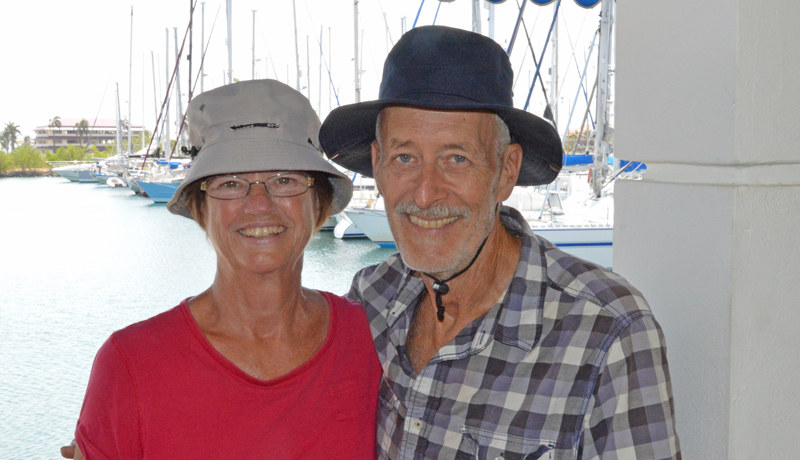
©Latitude 38 Media, LLC
A couple of weeks later, though, the cat was spotted in the Tuamotus. By that point, Latitude 38 had put out a ‘health and welfare’ notice to the entire Pacific Puddle Jump fleet requesting they keep a lookout for Mohini, and Tahitian yacht agent Cindy Dietrich (of CMA-CGM) had alerted her island contacts. Back home in the US, Anne was still puzzled and deeply concerned about what was up with her husband. On May 18, following a visit from the local gendarmes (requested by Cindy), Russ finally called Anne from Rangiroa. "He was completely confused, unable to clearly say where he is; unable to complete sentences," she told us. It was his first direct contact with her in 27 days.
Anne flew out to Tahiti a couple of days later, by which time the gendarmes had taken Russ to see a doctor who initially surmised that he’d had a stroke. But after many more tests in Papeete, doctors concluded that he probably had a brain tumor. Anne rushed him back to the States for probable surgery, leaving the boat in the hands of cruising friends. Further testing in San Diego concluded that it had been a stroke after all, which led to bleeding in the brain.
At that point we figured that Russ’ sailing days were probably over. Thankfully, we were wrong. While we were hosting a Puddle Jump event in Panama last month, Russ and Anne turned up to say hello. They were both looking fit and healthy and were back cruising on Mohini again, about to pass through the Canal en route to the Caribbean. And Russ’ hard work doing speech therapy had him talking normally again. We like to think that living the active cruiser lifestyle helped Russ achieve a nearly complete recovery, and we wish both him and Anne the best of luck wherever the wind blows them next.
Classy Deadline Today, 5 p.m.
Big Waves Return to Bay Area Coast
If you’re planning to sail out the Gate today, be advised that the Coast Guard 11th District has issued a warning to "vessel owners, operators, and beach-goers of high surf and winds affecting the Bay Area."
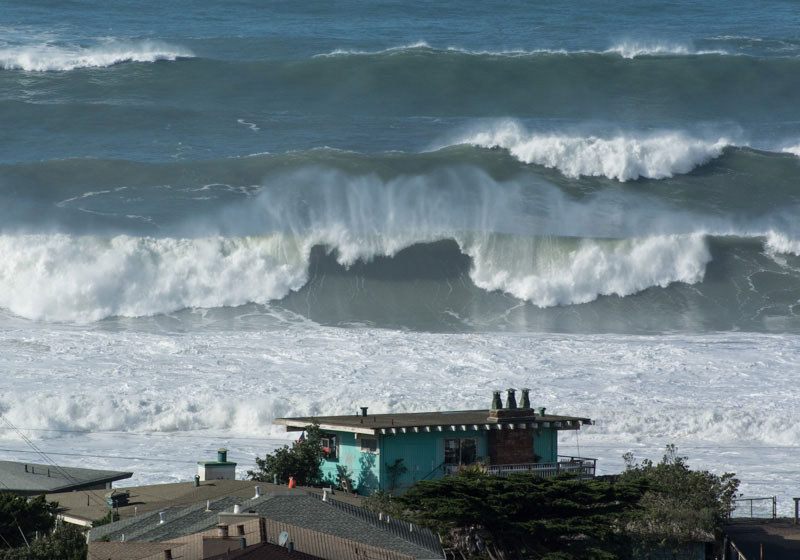
The advisory originally called for waves of 16 to 22 feet from Point Reyes south to Big Sur. That’s been moderated somewhat to a west swell of 15 feet, with northwest winds up to 25 knots. A small craft advisory for hazardous seas means that "waves will be steep enough to create a potential hazard to smaller vessels and inexperienced mariners. In the event that your vessel or someone aboard your vessel is in distress, call the Coast Guard on VHF/FM Channel 16 or the Coast Guard Sector San Francisco Command Center at (415) 399-3451."
Visit the National Weather Service at www.wrh.noaa.gov for the specific times and locations these advisories are in effect.
The OYRA’s Lightship Race will kick off the YRA’s ocean season tomorrow. Looking at the forecast for Saturday, we see that both the wind and the waves offshore are predicted to calm down. But the OYRA’s president, Andy Newell, is concerned that the wind might calm down too much. "With very light wind even 8-ft swells can be very sloppy," he said. We’re planning a report on the Lightship for the May issue of Latitude 38.
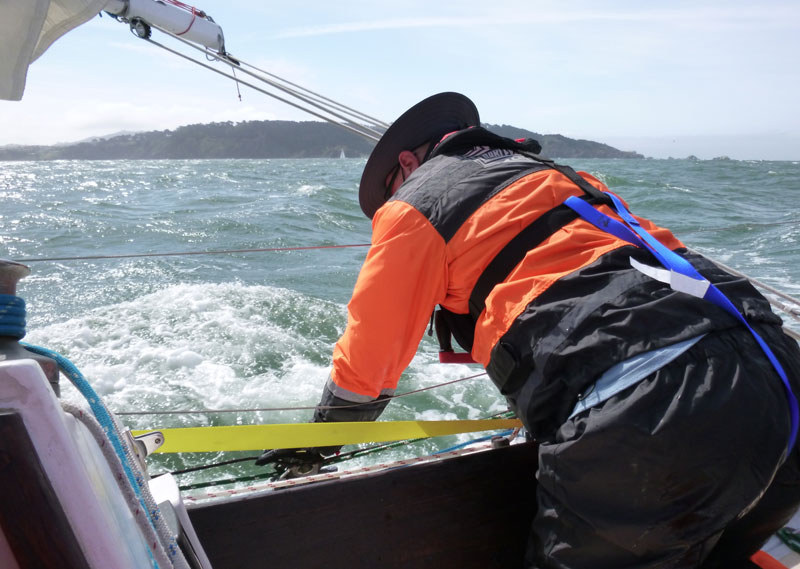
©Latitude 38 Media, LLC
The OYRA’s policy is that if NOAA issues a gale warning or hazardous seas warning for offshore waters the race committee can use an alternate in-the-Bay course. Last year, Principal Race Officer Bobbi Tosse canceled the final race of the series due to gale warnings both inside and outside the Bay — unseasonable for the first weekend of October.
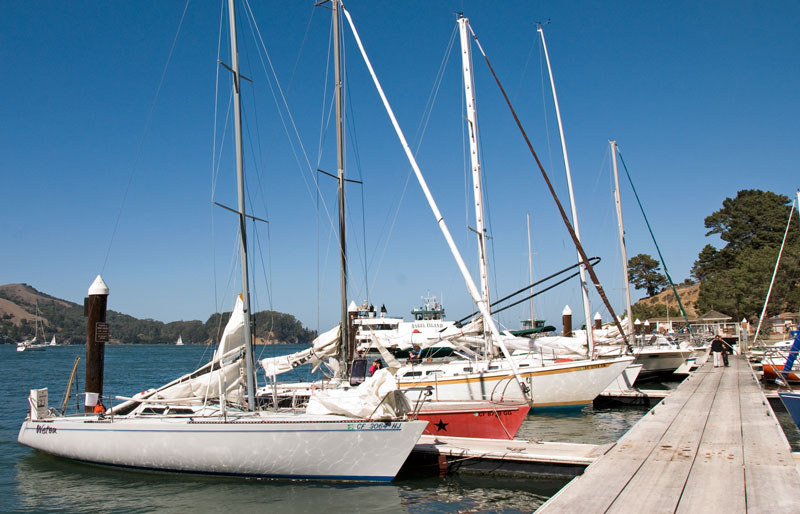
©2016Latitude 38 Media, LLC
